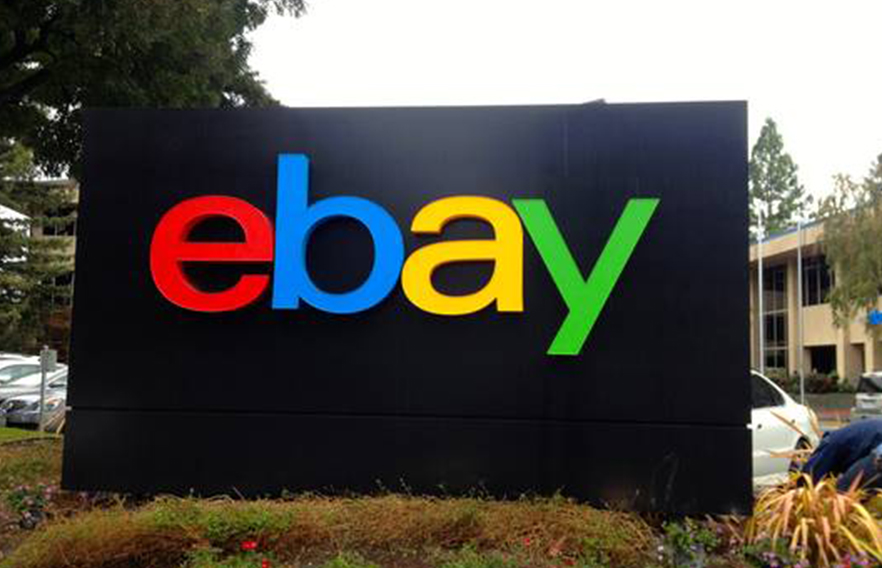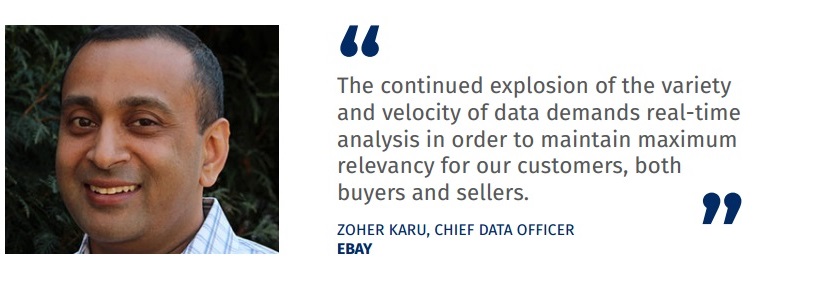In this inaugural Q&A of our new #highondata series, Zoher Karu, Chief Data Officer, eBay, shares how the company is using analytics to drive competitive advantage.
What are the most significant ways in which eBay is using analytics to gain competitive advantage?
With over 160 million active buyers, eBay has one of the richest global datasets in the industry. We are actively working to use our data not just to explain performance, but to actively use real-time machine learning approaches to harness the variety, velocity, and volume of data we process daily. We strive to constantly refine our interactions with every one of our customers at every touchpoint to create fully dynamic, relevant, and engaging site and app experiences, outbound marketing and contact-center interactions.
Your team uses data to get a deep understanding of consumers and consumer DNA. To accomplish this, you have combined a lot of conventional data with more unconventional data. Can you provide some examples of how this was done and what the impact has been – on consumers and on eBay’s business?
The more aspects of a consumers’ behavior you can bring together, the more powerful the analysis becomes, which results in a more relevant and inspiring experience. Transaction data is the basic starting point, but individual data, both historical and in real-time—from search strings, clickstream paths, contact-center interactions, buyer-seller communications, physical location, off-site internet interactions, type of device used, outbound marketing responses, and even local weather conditions—can all play a role. eBay continues to see a significant business impact by taking a more customer-centric approach to running the world’s largest marketplace.
According to Gartner by the end of this year 2016, $2B of online purchases will have been made via a mobile device. What are the differences you are seeing between a mobile shopper and someone shopping from a laptop or PC?
The line between mobile and desktop is becoming increasingly blurred. While mobile users often have shorter, more frequent interactions, half of our gross merchandise sales involves a mobile touch point. For example, in the US, a woman’s handbag is purchased every 10 seconds from a mobile device on eBay.
Retailers are “sitting” on so much consumer data, but many are not using it in a game-changing way. Why do you think that is?
Success does not come from collecting data for data’s sake. Acting on data requires an active combination of business thinking, analytical thinking, and technology thinking to be able to repeatedly make good decisions based on analysis and to do it at scale. Most organizations still approach data as a function of just one part of the organization, not one that is fully integrated into ongoing decision-making.
Where do you see the greatest opportunity for data to play a transformative role in the near future, either at eBay or within the broader retail industry?
Real-time processing & deep learning/AI are two big industry trends that eBay is taking advantage of to drive growth. The continued explosion of the variety and velocity of data demands real-time analysis in order to maintain maximum relevancy for our customers, both buyers and sellers. And of course, the number of data sources coupled with continued advances in computing power are enabling rich applications in the world of machine-assisted or machine-learned applications, e.g. suggested pricing on products, most relevant personalized deals, or identifying and merchandising inspirational products that engage consumers at different points in their shopping journey.
What is the best piece of advice you’d give companies seeking to maximize the value of their data?
Data is not just the job of the IT department; an analytical orientation must permeate all groups and aspects of the company. Data must become integral to both real-time operational and strategic decision-making processes, not something that you look only periodically to explain your results.
You may also find it interesting to read the insights on analytics in the current retail landscape brought to you jointly by LatentView and Knowledge@Wharton.
Disclaimer: Zoher Karu is a member of LatentView’s Customer Council




